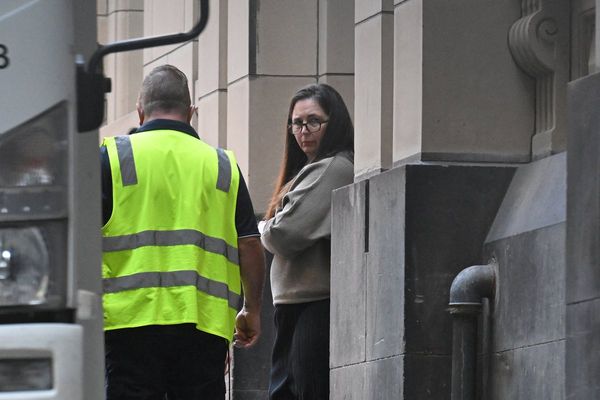A world-famous specimen of a prehistoric marine reptile named after Queensland has sat at Harvard University in the United States for about 90 years.
Central Queensland fossil education guide and enthusiast Phil Hore would like to see the world's only mounted Kronosaurus queenslandicus returned to the state.
The species lived between 120 to 200 million years ago and belongs to an extinct group of reptiles known as plesiosaurs, with the last dying in a mass extinction event with dinosaurs.
Mr Hore said he believed the Harvard fossil was "one of the biggest ones ever found".
"The closest thing would be maybe if you think of a crocodile with flippers, that is as big as a sperm whale and with the head the size of basically a small truck," he said.
But Queensland Museum palaeontologist Espen Knutsen said the specimen was "scientifically useless" and it would be better for researchers to hunt for new specimens in western parts of the state.
"Harvard dug out a couple Kronosaurus specimens and took them back to Harvard in America and they sat there for a few decades before some amateur came along who was interested in seeing it restored," he said.
"They reconstructed a lot of things and added some bits here and there and pretty much coated most of the skeleton in plaster.
"I think it'd be more worthwhile to spend some more time and money and go out and find better specimens here."
In fact, Dr Knutsen said the Harvard reptile at almost 13 metres long is exaggerated in size thanks to its reconstruction.
He said while it was difficult to estimate the size of the creature with only partial skeletons, some natural samples were about 10 metres long.
Harvard responds
The specimen now lies in Harvard's Museum of Comparative Zoology (MCZ) in Cambridge, Massachusetts.
The museum was contacted for comment but did not answer whether the university would consider returning the fossil.
Director Gonzalo Giribet said the fossil was purchased from the McNamara family in Queensland.
"The MCZ has maintained a longstanding relationship with the descendants of the owner of the ranch who sold the specimen, several of whom have visited the MCZ even as recently as September 2017," Professor Giribet said.
'Nobody else wanted it'
Founder of Richmond's Kronosaurus Korner, Rob Ievers, has devoted the last 27 years of his life to the ancient marine reptile.
Surprisingly, he does not believe Harvard's fossil should be returned to its homeland.
"It was given in good faith at the time, nobody else wanted it, and they've done years and years of prep work [on the fossil] that comes at a great cost."
The fossil was found on a property called Army Downs, 40 kilometres north of Richmond in western Queensland, sometime just after World War I.
The property owner was reportedly happy to donate the fossil to visiting American archaeologists.
Mr Ievers said that the method it was extracted from the earth was very different to how fossils are handled today.
"Then they packed wool in around the fossil, and then it was shipped overseas to the United States."
Despite its harsh treatment, Mr Ievers said the fossil was still extraordinarily rare.
"It's not everyday that you stumble across a fossil of Kronosaurus. You have to be extremely lucky," he said.
Queensland digging for newest emblem
The state government is asking Queenslanders to vote for their favourite fossil to add to the state's nine official emblems to recognise the importance of fossils to the tourism industry.
The list of 12 dinosaurs, including the Kronosaurus and Muttaburrasaurus, was made after feedback from museums, tourism organisations, and councils.
Mr Hore said he thought the Kronosaurus queenslandicus should win.
"It's in the name," he said.







